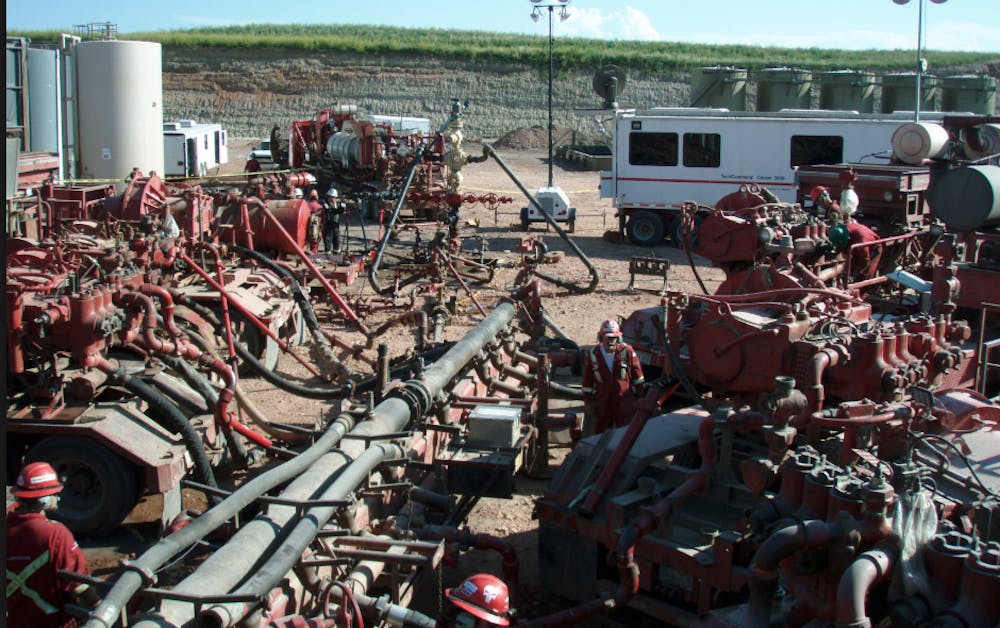Duke researchers detected sizable increases in water use and wastewater production from fracking between 2011 and 2016.
Fracking breaks rock with a pressurized liquid—usually water—to make it easier to mine for petroleum and natural gas, among other resources. The Nicholas School of the Environment team found the amount of water used per hydraulic fracturing well jumped by 770 percent, while the amount of wastewater produced in the process grew by 1,440 percent during the same period.
Opponents of fracking have expressed concern about potential environmental impacts from fracking, such as the contamination of ground and surface water. To handle the increasing amounts of potentially toxic wastewater produced, drilling companies sometimes opt to inject it into underground wastewater wells. Although this helps protect local water supplies, the practice has been linked to small- and medium-sized earthquakes, the researchers said.
“New drilling technologies and production strategies have spurred exponential growth in unconventional oil and gas production in the United States and, increasingly, in other parts of the world,” said Andrew J. Kondash, a graduate student at the Nicholas School and team member, in a press release. “This study provides the most accurate baseline yet for assessing the long-term environmental impacts this growth may have, particularly on local water availability and wastewater management.”
If currently low oil and gas prices were to rise, it could cause water use to spike, the researchers said. According to the study, water use and wastewater volumes from the fracking process could grow by 50-fold in unconventional gas-producing regions, and 20-fold in unconventional oil-producing regions by 2030. In fact, Kondash noted that even if prices and drilling rates remain as they are, the study’s models still project large increase in water waste and use by 2030.
Studies conducted in the past indicated that fracking’s water use paralleled that of other energy sources, but those studies only included the data from the early years of fracking, explained Anver Vengosh, professor of geochemistry and water quality at the Nicholas School.
However, the Nicholas School study utilized data from well into the fracking age, as it investigated data from industry, governmental and non-profit sources from 2011 to 2016. This provided a more accurate view of the environmental demands of large-scale fracking and potential long-term effects, the reserchers argue.
As innovations in drilling technologies drive increased unconventional oil and gas production in the U.S. and around the world, an accurate understanding of fracking’s water footprint is imperative, Kondash argued.
“New drilling technologies and production strategies have spurred exponential growth in unconventional oil and gas production in the United States and, increasingly, in other parts of the world,” he said in the article. "This study provides the most accurate baseline yet for assessing the long-term environmental release this growth may have, particularly on local water availability and wastewater management."
Kondash said he hopes that the lessons learned can be applied around the world.
“Lessons learned from production development in the United States can directly inform the planning and implementation of hydraulic fracturing practices elsewhere as other countries such as China, Mexico and Argentina bring their unconventional natural gas reserves online,” Kondash added.
The Duke team was composed of Kondash, Vengosh and Nancy Lauer, a 2018 Nicholas School doctoral graduate.
Get The Chronicle straight to your inbox
Signup for our weekly newsletter. Cancel at any time.

